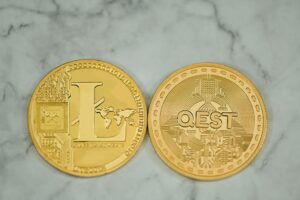How to Calculate the Cost of a Forex Swap
In the world of forex trading, a swap is a critical concept to understand. A forex swap, also known as a currency swap, is an agreement between two parties to exchange currencies at a certain date in the future and then reverse the transaction at a later date. This exchange allows traders to avoid the risk of currency fluctuations and manage their exposure to foreign currencies.
However, these swaps come at a cost. In this article, we will explore how to calculate the cost of a forex swap and understand its implications for traders.
Understanding Forex Swaps
Before diving into the calculations, let’s first understand the basics of forex swaps. A forex swap involves two currencies, each with its own interest rate. When traders enter into a swap agreement, they are essentially borrowing one currency to lend the other.
For example, let’s say a trader wants to swap US dollars (USD) for British pounds (GBP). The trader will borrow USD and lend GBP for a specific period. In return, they will receive an interest payment based on the interest rate differential between the two currencies.
The interest rate differential is the key factor in determining the cost or benefit of a forex swap. If the interest rate of the currency being borrowed is higher than the one being lent, the trader will receive a positive swap, meaning they earn interest on the position. Conversely, if the interest rate of the currency being borrowed is lower than the one being lent, the trader will incur a negative swap, resulting in an interest payment.
Calculating the Cost of a Forex Swap
To calculate the cost of a forex swap, traders need to consider three main factors:
1. Currency Pair: Determine the currency pair involved in the swap. Each currency pair has its own interest rate differential, which can vary significantly.
2. Position Size: Determine the size of the position. The cost of the swap is directly proportional to the position size. A larger position will result in a higher swap cost.
3. Holding Period: Determine the length of time the position will be held. The longer the holding period, the higher the swap cost.
Once these factors are determined, the swap cost can be calculated using the following formula:
Swap Cost = Position Size x Swap Points x Swap Rate
The swap points represent the interest rate differential between the two currencies in the currency pair. This value is provided by the forex broker and can be positive or negative.
The swap rate is the rate used to convert the swap points into the account currency. It is also provided by the broker and can vary depending on market conditions.
Let’s illustrate this with an example:
Suppose a trader holds a long position of 10,000 EUR/USD (Euro/US Dollar) overnight with a swap rate of -0.50. The current swap points for EUR/USD are -10.00.
Swap Cost = 10,000 x -10.00 x -0.50 = $5.00
In this case, the trader would incur a swap cost of $5.00 for holding the position overnight.
Managing Swap Costs
Swap costs can significantly impact a trader’s profitability, especially for those who hold positions for an extended period. To manage these costs effectively, traders should consider the following strategies:
1. Choose Currency Pairs Wisely: Different currency pairs have varying interest rate differentials. Traders should select pairs with favorable swap rates based on their trading strategy and objectives.
2. Shorten Holding Periods: By reducing the duration of positions, traders can minimize the impact of swap costs. However, this approach should be balanced with the trading strategy to avoid frequent trading costs.
3. Consider Hedging Strategies: Traders can use hedging techniques to offset swap costs. For example, they can open an opposing position in a currency pair with a positive swap rate to offset the negative swap costs of another position.
4. Consult with Forex Brokers: Brokers often provide information on swap rates and offer alternative swap-free accounts that eliminate or reduce swap costs. Traders should consult with their broker to explore these options.
Conclusion
Calculating the cost of a forex swap is essential for traders to manage their overall trading costs effectively. By understanding the factors that contribute to swap costs and implementing strategies to mitigate them, traders can optimize their trading performance and profitability.





